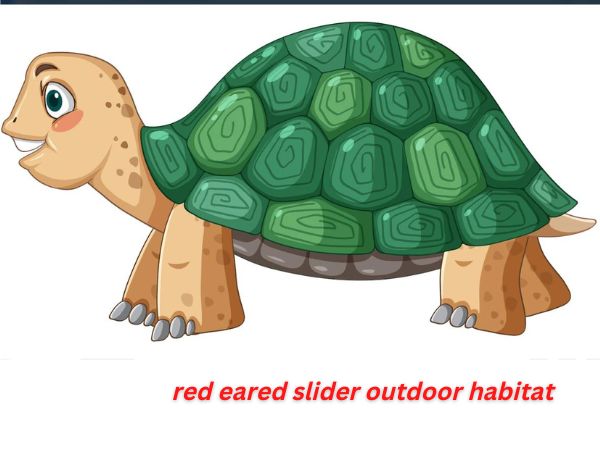red eared slider shell | turtlevoice
Today we discuss red eared slider shell. When you think about red-eared slider care and maintenance, red-eared slider turtles are not only fascinating creatures that require special attention – their shells tell an even more interesting story. we’ll explore here the anatomy of a red-eared slider shell and discuss what makes them such incredible animals.
You’ll learn why they have these distinctively colored shells and how they use them in various habitats. Let’s take a closer look at the amazing structure of the Red-Eared Slider’s Shell.
It is recommended that you take your pet turtle in for regular check-ups and make sure its housing environment is clean and healthy to prevent any of these illnesses from occurring.
red eared slider turtle shell problems:
- Red-eared slider turtles are prone to shell problems such as shell rot, infections, and even tumors. Shell rot is the most common problem caused by a bacterial or fungal infection due to poor water quality and housing conditions.
- Infections can occur from wounds or scratches on the turtle’s shell which may be due to fighting with other turtles or contact with sharp objects. Tumors can also affect the shell of a red-eared slider turtle, often appearing as small white or yellowish raised growths on their shells.
- red eared slider turtles also face other health issues such as metabolic bone disease, respiratory infections, and parasites. Metabolic bone disease is caused by a calcium deficiency which results in weak bones and shells that may easily fracture or break.
- Respiratory infections can cause difficulty breathing and occur due to poor water quality or other environmental factors. Parasites, such as redworms, can also affect the turtle’s health if not properly treated.
red eared slider shell rot symptoms:
Red-eared slider shell rot can be identified by certain symptoms. The most common symptom is the presence of soft, foul-smelling patches on the shell. These patches are typically brown or black in color and may appear to be slimy. Shell discoloration or flaking may also occur. In severe cases, an open wound with exposed flesh may be present.
Other signs of shell rot include redness and swelling around the affected area, as well as excessive shedding and a general lack of activity. If left untreated, shell rot can spread to other parts of the turtle’s body and cause serious infections that can lead to death.
If you think your red eared slider may have shell rot, keep an eye out for the following signs:
• Soft, foul-smelling patches on the shell
• Brown or black discolorations
• Flaking or shedding of the shell
• Redness and swelling around affected area
• Open wounds with exposed flesh on the turtle’s body
• General lack of activity and reduced appetite.
red eared slider pointy shell:
If your red-eared slider has developed a pointy shell, it is likely due to a nutritional deficiency. To help remedy the issue, start by making sure they are receiving a balanced diet that includes natural sources of calcium, such as cuttlebone or shrimp shells. You should add some extra vitamin supplements to their diet as well.
make sure that your turtle has ample exposure to natural sunlight, as this will help with their absorption of vitamins and minerals. Finally, ensure that they have adequate basking spots in the tank so that they can absorb as much warmth as possible. This should improve their overall health and help reduce the pointy shell issue.
If the pointy shell issue persists even after making dietary and habitat adjustments, then it may be necessary to seek veterinary advice as there could be an underlying health condition that is causing the problem. The vet can assess your turtle’s health and determine the best course of action for treating their condition.
In some cases, a change in diet or supplement routine may be recommended. In more severe cases, surgery may be necessary to correct the issue. It is important to take your turtle’s health seriously and seek treatment if needed.
red eared slider itchy shell:
• Red-eared sliders suffering from itchy shells can be helped by ensuring their environment is clean and not overcrowded.
• Providing a warm, well-lit basking area for the turtle to relax and dry off should also be done.
• An Epsom salt bath may provide relief from any infections or parasites that may have caused the itchiness.
cleaning a red-eared slider turtle shell:
first, take a shallow bowl and fill that with warm, soapy water. use a soft-bristled toothbrush or sponge – never metal scrubbers – to gently scrub your turtle’s shell and remove any dirt, algae, and grime. Be sure to pay extra attention to the ridges and crevices of the shell. Rinse the shell with clean water after scrubbing.
after finishing the scrub, fill a shallow basin with warm water and add a few drops of marine-grade iodine or chlorhexidine to the water. Soak your turtle’s shell in this solution for 15 minutes and let it air dry afterward. This will help treat and prevent any fungal or bacterial infections.
in the end, use a soft cloth to buff the shell until it shines. This will help to bring out its natural color and luster. If you want, you can also apply a coat of turtle wax for extra protection against dirt and debris. Follow these steps regularly to keep your turtle’s shell clean and healthy.
Faqs for red-eared slider shell:
Yes, red eared slider turtle shells can shed. This is a natural process and usually occurs at least once a year during the warmer months. The shedding occurs in patches, which should eventually grow back in time. dietary supplements may help to promote healthy shell growth.
This is likely due to a condition known as “shell rot,” caused by poor water quality, inadequate diet, and/or lack of proper basking area. If shell rot is the issue, treat it immediately with a veterinarian-approved treatment plan.
final words:
The Red Ear Slider turtle is a popular pet for many people, They can live for up to 30 years in captivity and get as big as 12 inches long. If you are thinking about getting one of these turtles, do your research so that you know how to properly care for it. These reptiles need specific living conditions and diets in order to stay healthy and thrive. shell’s strength is important to the overall health of the turtle. A well-cared-for slider can be a great addition to your family.




